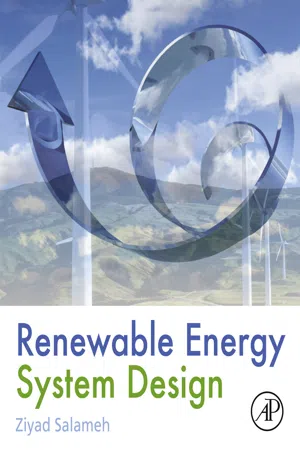
- 404 pages
- English
- ePUB (mobile friendly)
- Available on iOS & Android
Renewable Energy System Design
About this book
The limitation of fossil fuels has challenged scientists and engineers to search for alternative energy resources that can meet future energy demand. Renewable Energy System Design is a valuable reference focusing on engineering, design, and operating principles that engineers can follow in order to successfully design more robust and efficient renewable energy systems. Written by Dr. Ziyad Salameh, an expert with over thirty years of teaching, research, and design experience, Renewable Energy System Design provides readers with the "nuts and bolts" of photovoltaic, wind energy, and hybrid wind/PV systems. It explores renewable energy storage devices with an emphasis on batteries and fuel cells and emerging sustainable technologies like biomass, geothermal power, ocean thermal energy conversion, solar thermal, and satellite power. Renewable Energy System Design is a must-have resource that provides engineers and students with a comprehensive yet practical guide to the characteristics, principles of operation, and power potential of the most prevalent renewable energy systems.- Explains and demonstrates design and operating principles for solar, wind, hybrid and emerging systems with diagrams and examples- Utilizes case studies to help engineers anticipate and overcome common design challenges- Explores renewable energy storage methods particularly batteries and fuel cells and emerging renewable technologies
Frequently asked questions
- Essential is ideal for learners and professionals who enjoy exploring a wide range of subjects. Access the Essential Library with 800,000+ trusted titles and best-sellers across business, personal growth, and the humanities. Includes unlimited reading time and Standard Read Aloud voice.
- Complete: Perfect for advanced learners and researchers needing full, unrestricted access. Unlock 1.4M+ books across hundreds of subjects, including academic and specialized titles. The Complete Plan also includes advanced features like Premium Read Aloud and Research Assistant.
Please note we cannot support devices running on iOS 13 and Android 7 or earlier. Learn more about using the app.
Information
Factors Promoting Renewable Energy Applications
Abstract
1.1 Introduction

1.2 US and world energy usage for electricity generation
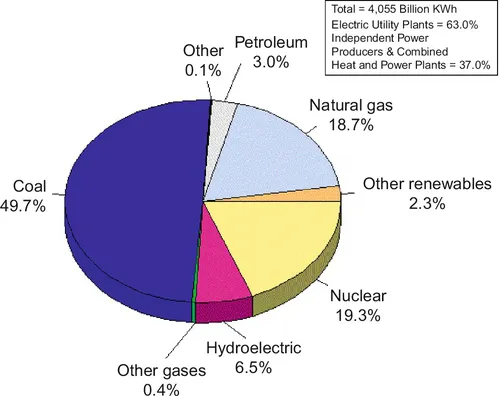
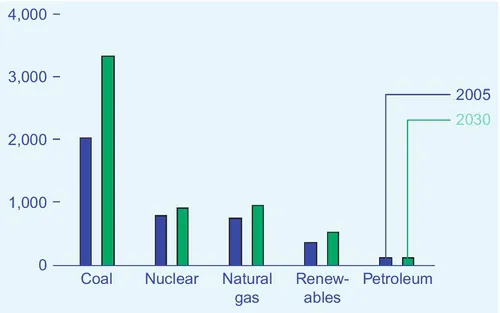
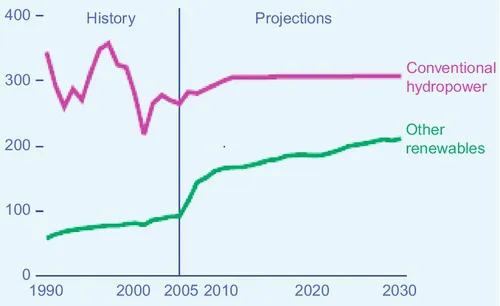
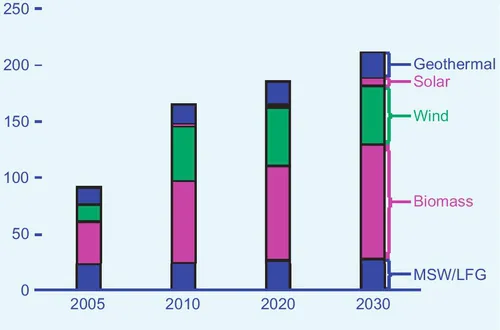
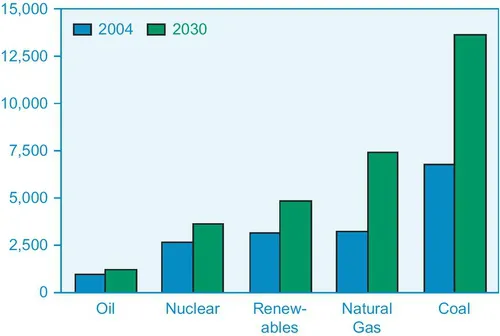
1.3 Factors affecting the application and use of alternative energy sources
1.3.1 The impact of high oil prices
Table of contents
- Cover image
- Title page
- Table of Contents
- Copyright
- Preface
- Chapter 1: Factors Promoting Renewable Energy Applications
- Chapter 2: Photovoltaic
- Chapter 3: Wind Energy Conversion Systems
- Chapter 4: Energy Storage
- Chapter 5: Emerging Renewable Energy Sources
- Index